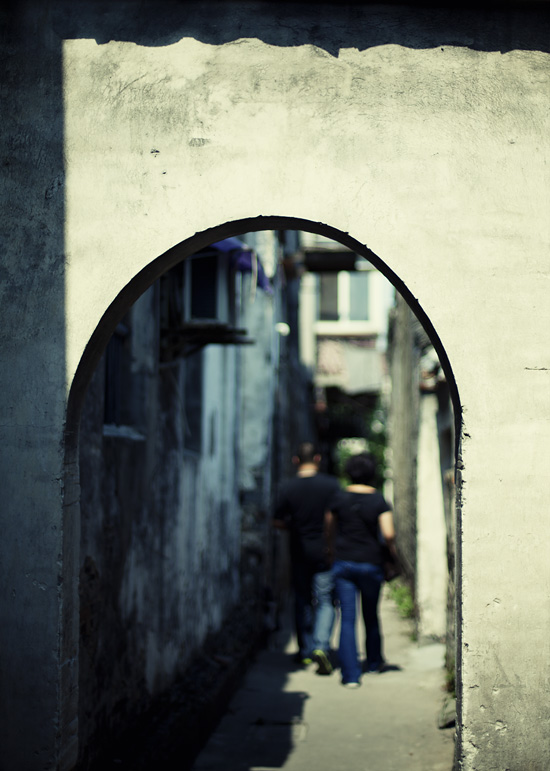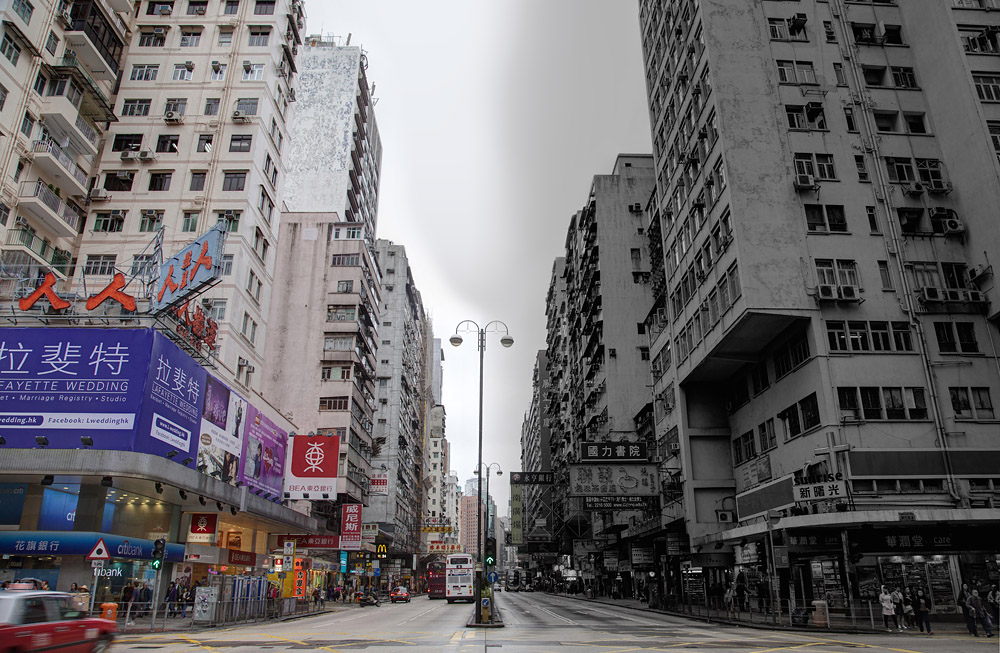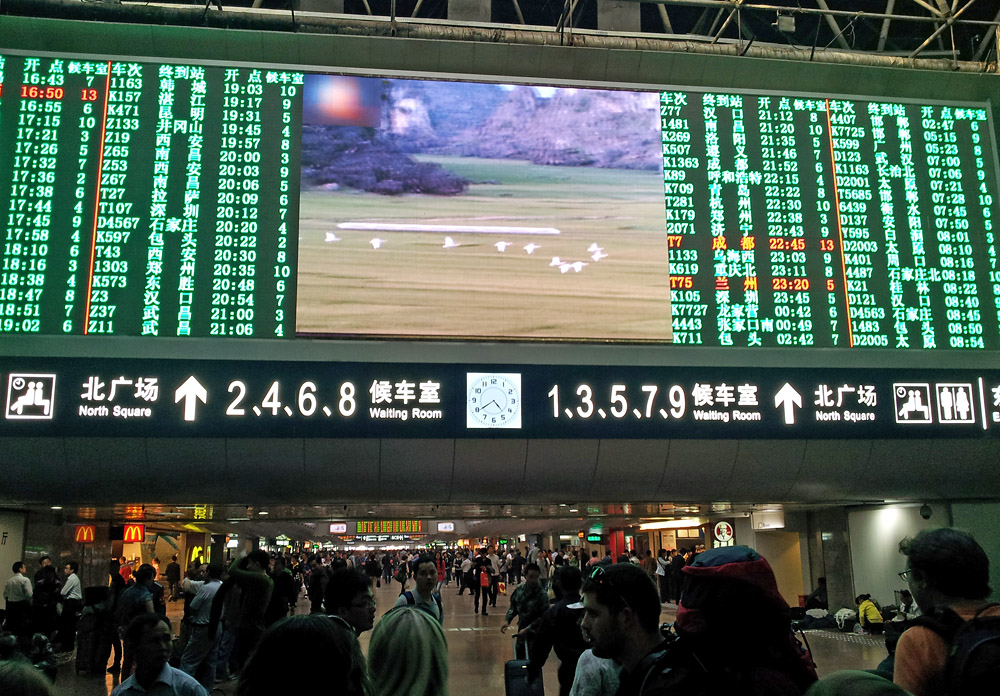East meets West
Though it sits on China’s south coast, and is ethnically 95% Chinese, Hong Kong is perhaps just as much western metropolis as it is an East-Asia hub. Owing to nearly 300 years of British influence, this staunchly capitalist city has prospered with low tax rates and a free economy. In 1997, although the Brits transferred the city’s sovereignty to mainland China, Hong Kong retained its same basic governance and freedoms that it has had under British authority.
It’s a fascinating mash up of influence. Education, politics, and law all follow their basic counterparts in England. Other aspects of the city more closely relate to mainland China – food, entertainment and spiritual beliefs.
East meets West aside, Hong Kong is simply one of the most well developed cities on earth. Efficient transportation, towering skyscrapers, and often overwhelming density.
As the routine goes, click here for this gallery of Hong Kong.
A Shanghai Gallery
If you don’t like skyscrapers and endless city lights, look away.
Shanghai seems like the vision we had of the post modern future back in the 80s. I couldn’t help but think of Bladerunner while walking around Shanghai at night. At street level Shanghai can be dark and grimy, but above you the colors are neon electric. It can feel like the most modern city in the world, or like you’re in going back in time to Shanghai’s colonial era.
Shanghai is really something special. It might just be the most exciting city in the world right now; it’s the head of China’s new world empire, growing faster than Manhattan in its golden era and stretching further than the eye can see. It’s a city saturated with urban chaos, where you can find cluttered street markets of old, and international finance centers of new. Walk along the Bund, and you’ll see the architectural remnants of when Shanghai was a booming western trade colony within China. Across the river, Pudong, just 20 years ago was undeveloped land. And now, It has one of the world’s most impressive skylines.
At street level, you get the sense that everything is moving. The pedestrians compete with the scooters and the sales carts for control of the sidewalks. The streets are a dangerous endeavor for anybody looking to drive. Above that, with some elevation, you can watch Shanghai go on for miles and miles. It’s an army of high-rises and neon lights – straight out of a 80s sci-fi. It’s hardly inviting, but get to know Shanghai, and you might not want to leave.
Wuzhen, canal town.
I can’t say too much about Wuzhen, a small canal town between Hangzhou and Shanghai. It bordered between charming and a tourist trap – a surprising amount of tourists coming from miles to see pre-industrial China. Mind you, most of the tourists were Chinese. I’d say it was a living museum of Chinese history, perhaps not totally authentic, but a nice stop on the road to Shanghai nonetheless. I’ve got a gallery placed here for the whole short take.



“Heaven Above, Hangzhou below.”
Less than 24 hours in Hangzhou: arrive at the hotel at 9pm. Enjoy the view from the hotel. Take a late night walk along a tree lined canal; walk through Hangzhou’s brand of urban character. Wake up early, head to the scenic West Lake for a few hours. Listen to the odd choir of locals singing out of tune along the lakefront. Enjoy the well kept gardens, have some tea.
That’s about the extent of my time in Hangzhou, an accelerated dose of this affluent Chinese city. It’s known throughout China for its scenic beauty. They say in Beijing, that you need to wash your shirt every day to keep it clean, and in Shanghai every other day. In Hangzhou, however, after a week your shirt will still be clean. Life is more relaxed and the environment is clean, the saying suggests. I didn’t have much time to relax here in Hangzhou, but I managed a few captures, nonetheless. Click here for the gallery.
“Heaven Above, Hangzhou below.” – Chinese saying.

Xian and a fallen army
Sorting through my pictures from Xian has left me wanting to return to this place, the cultural capital of interior China. Compared to Beijing, Xian was more what I had envisioned China to be; A more authentically oriental feel with crowded streets, wild markets, and historical monuments.
Xian is China’s de facto historical capital. It’s one of the oldest capitals of human civilization, dating back to the Zhou dynasty from 1046 BC. There were 13 Chinese dynasties centered in Xian, whereas Beijing has held just 5. The 3 millennia of history take form in the ancient city wall, the Terracotta Army, and the Bell and Drum towers in central Xian.
Like the rest of China though, Xian isn’t standing still. Industrialization has come, bringing factories, freeways, and fake apple stores. Today with over 8 million people, the centre of Xian has still managed to capture both modern and ancient Chinese culture and history. It’s colorful, it’s different, and it’s most definately China. Xian, so glad I met you. Link.


Xian is up next, but along the way;
Travel in China is an adventure in and of itself. Subways, as I had already found out in Beijing, are ridiculously crowded and in some instances they were physically demanding. The pushing and shoving that takes place in order to get on a train is baffling, and even entertaining if you’ve got the right sense of humor.
The Beijing Railway station, which would be my exit point from Beijing, is one of the more overwhelming places to travel from. It felt like a gigantic, hectic airport; so busy that there was no place to sit but the floor (so we did). This was authentic Chinese travel!
Xian, some 1200km away, would end up being a 17 hour train ride not including the initial ~5 hour delay suffered at the Beijing train station. Along the way, the opportunity to see parts of China I would have not otherwise seen. This countryside that seems so distant from the modern china you see in parts of Beijing, yet there are still 700 million inhabitants that live in rural Chinese society. Here’s a few pictures of the trip from Beijing to Xian.

Not uncommon for rural chinese “city” planning – A highrise in the middle of farmers fields. More effecient you see, less land used on housing.

Sleeping cabin in car number 7.

Hill shelters quite common in rural China

Closer to Xian, rural China is transforming into a highrise suburban expanse.

The Great Wall
I’m continuing my feat of sorting through my photos from the past month. This is going to take a while! Here’s a quick set from the Great Wall of China, and some surrounding scenery. Link.
Beijing Gallery
Beijing, perhaps not what you’d expect from China. I mentioned it previously; the wide streets, modern high rise apartments and gleaming glass might leave you confused as to the country in which you stand. But this is, after all, the political capital of the People’s Republic, and receives much of the focus in China’s push towards a modern empire.
I took about 450 pictures in Beijing, here are 70. Mind the captions if you like, and click here.
Upadte: fixed a broken link!

















